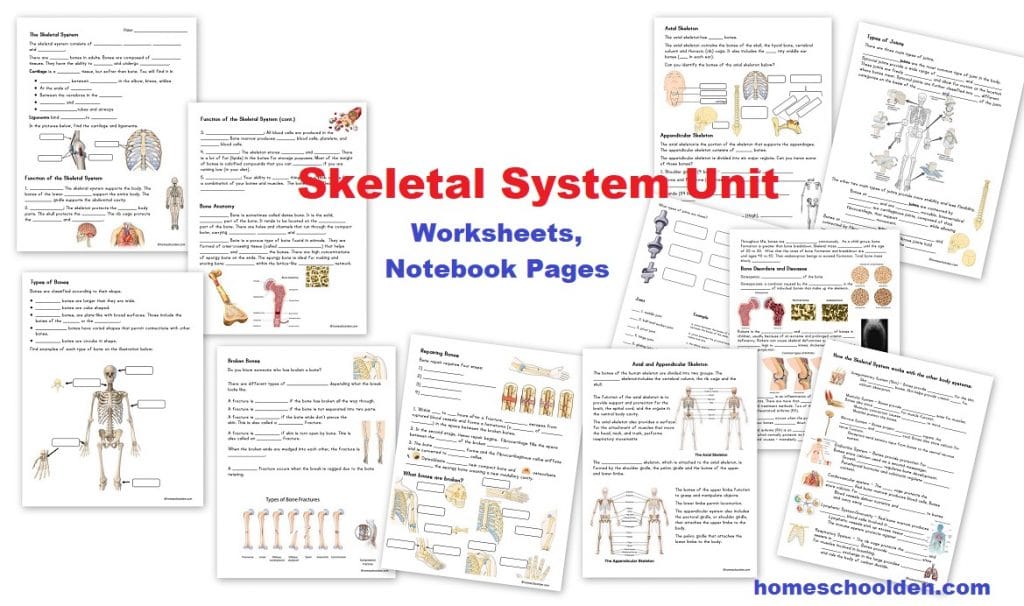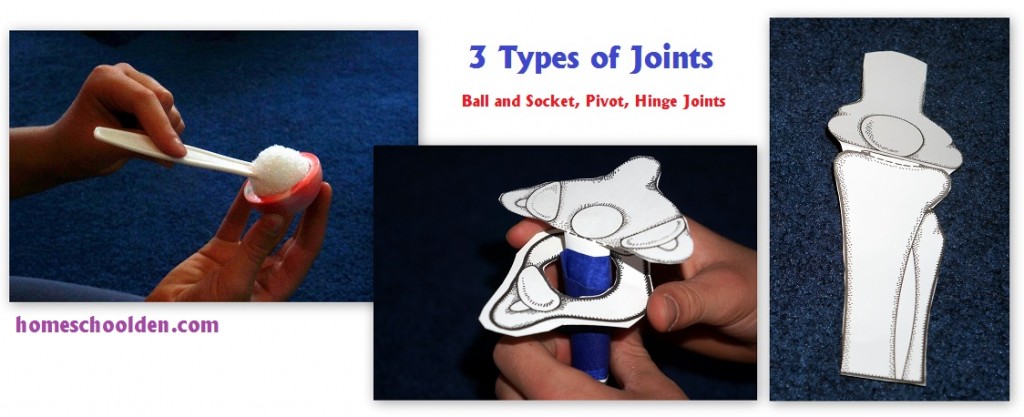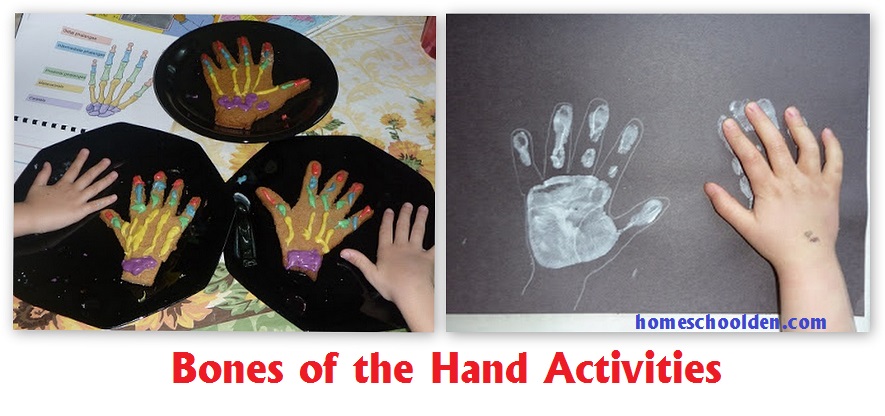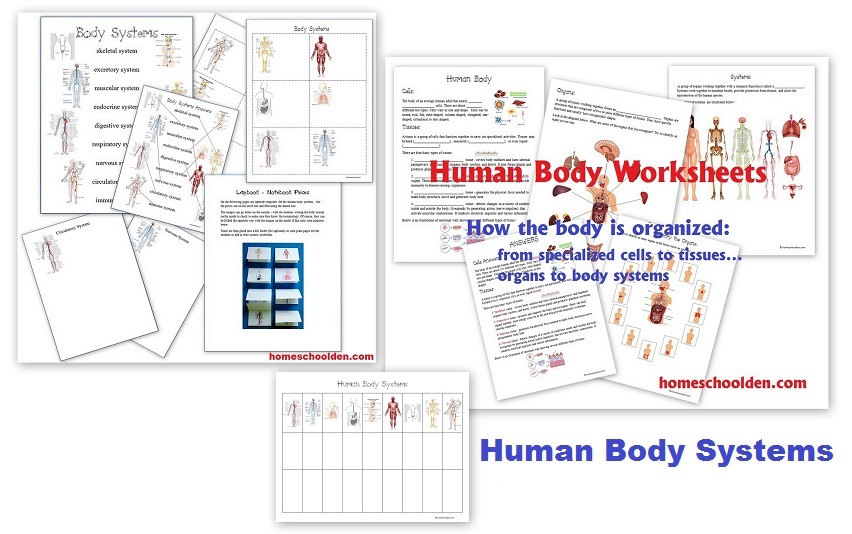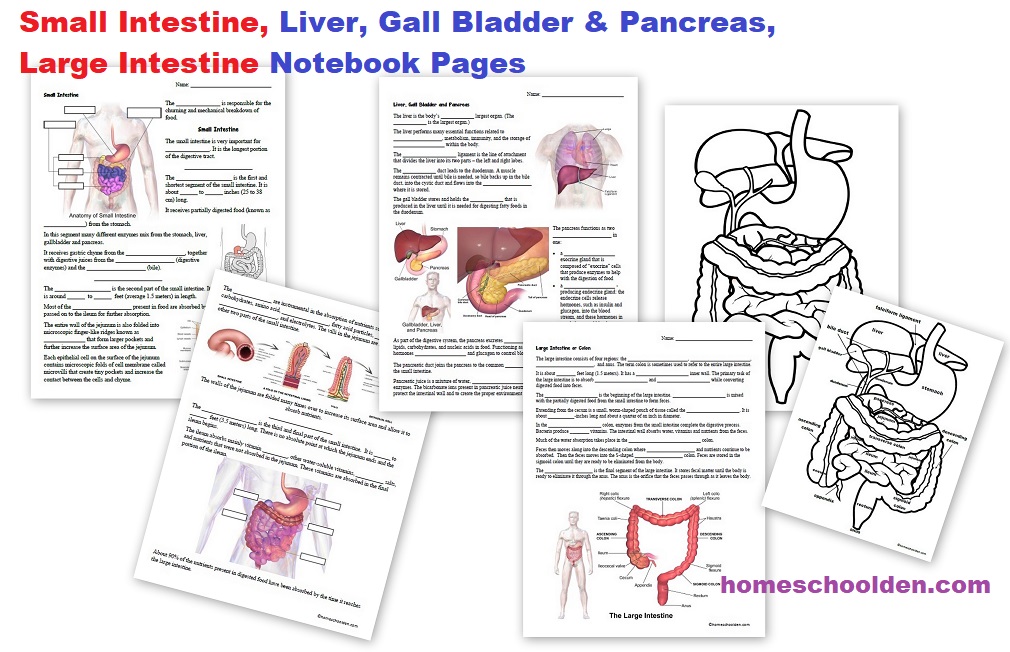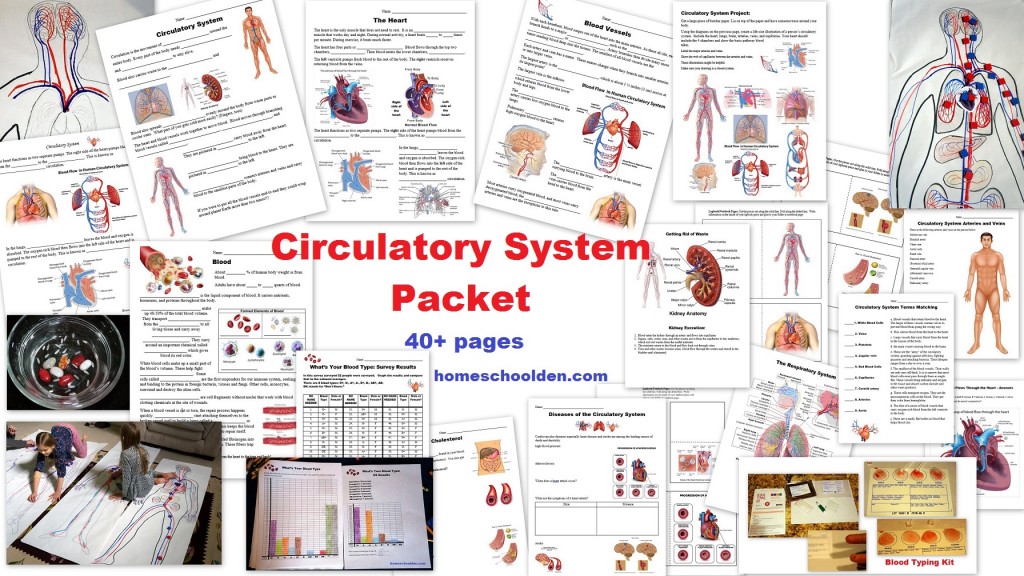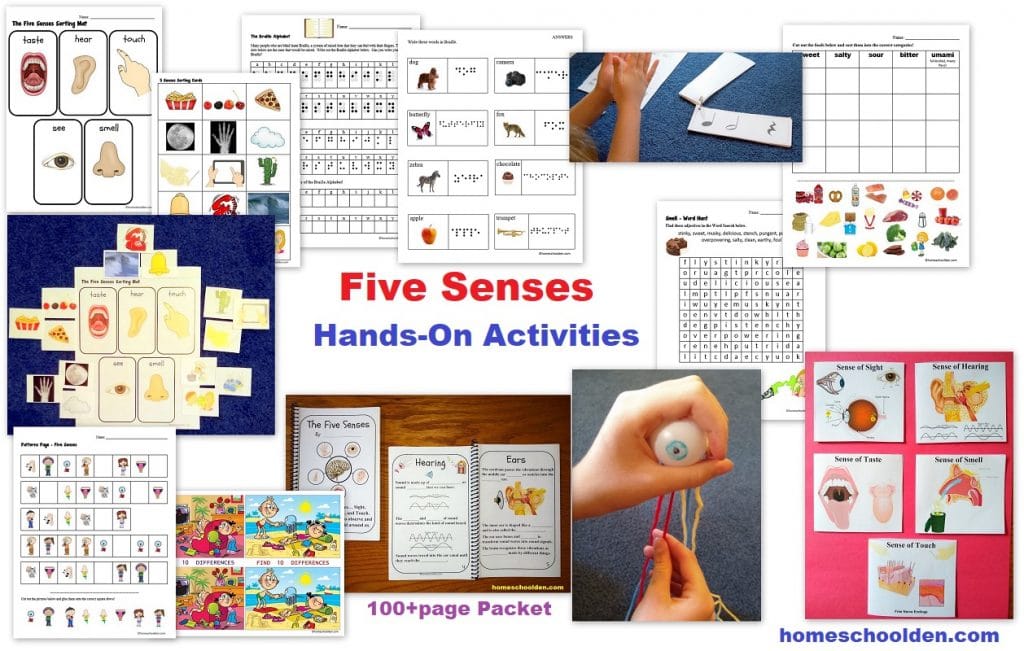Skeletal System Worksheet Packet & 6 Hands-On Activities About Bones
90+ Page Skeletal System Packet!
This 90+ page packet covers the following topics:
- Identify the bones of the body
- Basic functions of the skeletal system (support, protection, assistance in movement, the storage and release of minerals, blood cell reproduction),
- How bones grow and repair themselves, bone remodeling, bone marrow, and the spine
- Bones and Cartilage Activity
- How the skeletal system is divided (axial and appendicular skeleton)
- Types of Joints
- Bone disorders

We spent the past several weeks studying the bones of the human body. Our skeletal system unit took much longer than anticipated because we wound up diving into information about how the skeletal system is divided, joints, the types of bones based on shape (long bones, flat bones, etc.), as well as some bone disorders (because LD is really fascinated by diseases these days!). We did a number of fun, hands-on activities along the way which I’ll share with you below.
As you may recall, we actually started off our Human Body Unit with a discussion of how the human body is organized: cells, tissues, organs and body systems. The kids (and I) had a lot of fun reviewing all the human body systems with a song called Body System Rock (more about that over at that post!)
Bones of the Body: Our first activity was to go over some of the names of the bones in our body. We watched a really fun video that shows all the bones of the body called Stanley the Skeleton. The girls then made their own skeleton using The Body Book: Easy-to-Make Hands-on Models That Teach (affiliate link). We printed the sheets out on cardstock. The kids cut them out and put the body together with brads. We used their skeleton throughout the next couple of weeks to review the major bones of the body. The kids all filled out the matching page (in the packet) as well. You can see the matching page they used in the photo below. There are several versions of that page. The one they used, the words were more or less in order. There’s another sheet where the bones are in completely random order and there’s also a blank page for older students to fill in all the bones themselves.
One of the kids’ activities was to create a song or poem that included at least 10 bones of the body. They had a lot of fun with that and performed both for me and later for Hubby when he got home from work. That was a big hit. The kids really enjoyed that activity!
Next, we went over some new worksheets I made for the kids. We talked about some of the basic functions of the skeletal system (support, protection, assistance in movement, the storage and release of minerals, blood cell reproduction), how bones grow and repair themselves, bone remodeling, bone marrow, and the spine.
Bones and Cartilage Activity: We spent quite a bit of time talking about the role cartilage plays in the body. We did an activity that we had done several years ago that shows how cartilage acts as a cushion in the discs as well as in the joints. I gathered some materials from the grocery store for this activity (pipe cleaners, gummy life savers–for the cartilage, Rigatoni–for the long bones, and Rotelle for the vertebrae.) I had to look in several stores for Rotelle noodles. I found them in Harris Teeter.) First, I had the kids place about 10 Rotelle noodles on a pipe cleaner. On another pipe cleaner I had them alternate gummies and Rotelle noodles.
I had them put the “neck” up near their ear, move the neck around and listen to the difference between “bone on bone” and “bone separated by cartilage.” We also talked about how much more easily the bones moved with cartilage in place. We talked about back injuries. I had a bulging disc in November and spent 8 weeks in physical therapy. We talked a lot about that!!
Finally, we proceeded to make a gummy guy… As you can see we used pipe cleaners for the arms and legs and used Rigatoni for the long bones.
Types of Joints: There are a number of different types of movable joints in the body and we talked about the hinge joints, ball and socket joints and pivot joints. The Body Book (affiliate link) had another printable on joints that we used for this part of our unit.
The book had a ball and socket printable as well, but instead we made our own with a Styrofoam ball and a toy popper (like the ones at Oriental Trading).
We also talked about what it is like when your joints don’t work correctly (like people who get arthritis. I taped popsicle sticks to their fingers and they tried to pick up some objects with their fingers immobilized! Unfortunately, my pictures were blurry, but we did this same activity when the kids were little… so here are some old photos of that! 🙂 We used a lot of tape, but the kids really got a kick out of this activity (even being quite a bit older!)
Our Skeletal System Lapbook and Notebook Pages Packet has been updated to include worksheets on the basic functions of the skeletal system, how the skeletal system is divided, joints, the types of bones based on shape, bone disorders, etc. I also added in the hands-on activity ideas I shared on the blog here.
UPDATE: This packet has just been updated to include nearly 50 pages of new materials!
Our packets are PDF digital downloads. After your purchase, remember to check your PayPal email address for the download link. This page answers some Frequently Asked Questions. Feel free to email me if you have any questions! ~Liesl
The Skeletal System Packet is also included in the Human Body Bundle (details below).
$6.99
Don’t forget to check your PayPal email address for the download link!
Skeletal System Activities for preschool and kindergarten: Before I go, I wanted to share a couple of the activities we did when the kids were younger. We had a wonderful, heavy cardboard floor puzzle of the human body that we used a lot. It was big enough that when I drew an outline of the kids (around the age of 3 or so), the skeleton fit pretty well inside that drawing! This puzzle was called Look Into Your Body All About You From the Inside Out with Floor Puzzle Skeleton (affiliate link).
Another activity we did that was really fun, was making cookie dough hands (I traced around their hands and then baked them). They used icing (in a ziploc bag) to squeeze out the different bones of their hand. We also talked about x-rays and then did the little activity on the right… showing an “x-ray” of their hand! 😉
We had two books we really used a lot for these units the Body Book that I mentioned above. The other one we used quite a bit for our human body systems units was Human Anatomy Coloring Book (affiliate link) has pages you can print out and color in.
Disclosure: Please note that some of the links above are affiliate links, and at no additional cost to you, I will earn a commission if you decide to make a purchase.
Some of our other Human Body Packets:
These are some of the packets that are included in our Human Body Bundle. See photos down below or at this Human Body Bundle Page or in Our Store. These packets can be purchase separately or you can purchase all of them in one bundle. I included some photos of these packets below.
These packets can be purchase separately or you can purchase all of them in one bundle. I included lots of photos of these packets at the Human Body BUNDLE Page.
Our packets are PDF digital downloads. After your purchase, remember to check your PayPal email address for the download link. This page answers some Frequently Asked Questions. Feel free to email me if you have any questions! ~Liesl
$8.99 A Study of Cells Unit (150+pages) Animal and Plant Cells, Cell Theory, Organelles of the Cell, Photosynthesis and More
$4.99 Human Body Systems (50+ pages)
$6.99 Skeletal System Packet (90 pages)
$7.99 Digestive System (150+ pages)
$6.99 Circulatory System Unit (40 pages)
$5.99 Muscular System Unit (50+ pages)
$3.99 Nervous System Packet (20+ pages)
$5.99 Endocrine System Packet – (60 pages) Exocrine glands are those glands that have ducts and lead to the surface of the body… like sweat glands, tear glands whereas endocrine glands (like the hypothalamus or thyroid) secrete hormones into the bloodstream.
$5.99 Five Senses Unit: This 100+ page Five Senses Unit has dozens of hands-on activities and detailed, colorful worksheets for learning all about the five senses – sight & the eye, hearing & the ear, taste & the tongue, smell & the nose, touch & the skin. (NOTE: This unit is NOT included in the Human Body BUNDLE 1 or 2.) Recommended for PreK to Early Elementary. View Post, image 1, image 2, image 3, image 4, image 5
$35.99 Human Body BUNDLE OPTION 1: Human Body Systems, Skeletal System Packet, Digestive System, Circulatory System Unit, Muscular System Packet, Nervous System Packet, Endocrine System, Reproductive System Worksheets (Does not include the Study of Cells Unit or the Five Senses Unit.)
$42.99 Human Body BUNDLE OPTION 2: Human Body Systems, A Study of Cells Unit, Skeletal System Packet, Digestive System, Circulatory System Unit, Muscular System Packet, Nervous System Packet, Endocrine System, Reproductive System Worksheets (We often talked about cells as we started our Human Body Units… then went on to talk about human body cells, tissues, organs & systems… and then would move on to a different body system each year. Generally as homeschoolers, we covered just one or two major body systems each year before moving on to another science topic.) (Does not include the Five Senses Unit.)
$38.99 Human Body BUNDLE OPTION 3: Human Body Systems, Skeletal System Packet, Digestive System, Circulatory System Unit, Muscular System Packet, Nervous System Packet, Endocrine System, Reproductive System Worksheets AND The Five Senses Unit (Does not include the Study of Cells Unit.)
Don’t forget to check your PayPal email address for the download link.
If you have any questions, feel free to contact me! ~Liesl
View our Privacy Policy here.
Each year usually in the spring semester, we focus on the human body.
We often spend a little bit of time reviewing what we learned the previous year and then add to what we learned.
If you have younger kids, you might want to just jump right in with the Skeletal System Unit and/or the Digestive System Unit.
Once my kids were a little older (with my youngest in 2nd grade and my older two in upper elementary) – we started covering and reviewing Cells (the organelles and their function) each year. I want them to feel comfortable with the names and have a general idea of the “jobs” each of these organelles have. By reviewing it each spring, they’ve gradually come to understand how these work together a little better each year. That will be helpful once they get to high school level biology.
If you have a student who is 8+ you might want to do the units in this order:
Note: Since our family studies one major system each year, sometimes we skim over some of this so we can dive in depth into that particular body system.
- Cell Unit
- Photosynthesis (and you can do a little tangent about atoms and building molecules)
- Human Body Systems (Depending on the age of your kids, you might want to just introduce them to the major human body systems and then move straight on to one of the units below… or you can spend a little time talking about how cells/tissues/organs/body systems work as a whole. The packet you are getting includes ALL the materials, but I’ve added to this over the course of several years, so don’t feel like you need to cover all of this at once!
- Skeletal System – We almost always review the major bones of the body each year. Some years, we go into more depth about things like the structure of bones or the axial system. Other times, we review the major bones and move on!
- Digestive System – This was a fun, hands-on unit. I would suggest you do this one before the Circulatory System unit.
- Circulatory System – In this unit my kids were in elementary and middle school so we did some data collecting, graphing and other activities. If you have younger kids, you can just focus on the blood system (how blood leaves the heart and enters the lungs to pick up oxygen, then returns to the heart where it is sent off to the extremities).
- Muscular System – We will be covering this next year (2018, fingers crossed!). This is a VERY ROUGH DRAFT of this packet… and I even hesitated including it in the bundle, but in the end thought it might come in handy if you cover this material before we do! When we get to this unit and when the file is updated you will get an email from SendOwl (the delivery service I use) letting you know!
Here are some screen shots of these units:
$6.99 Circulatory System Unit (40 pages)
$5.99 Endocrine System Packet – (60 pages) Exocrine glands are those glands that have ducts and lead to the surface of the body… like sweat glands, tear glands whereas endocrine glands (like the hypothalamus or thyroid) secrete hormones into the bloodstream.



$5.99 Five Senses Unit: This 100+ page Five Senses Unit has dozens of hands-on activities and detailed, colorful worksheets for learning all about the five senses – sight & the eye, hearing & the ear, taste & the tongue, smell & the nose, touch & the skin. (NOTE: This unit is NOT included in the Human Body BUNDLE 1 or 2.) Recommended for PreK to Early Elementary. View Post, image 1, image 2, image 3, image 4, image 5
Don’t forget to check your PayPal email address for the download link.
If you have any questions, feel free to contact me! ~Liesl
View our Privacy Policy here.
You can visit Our Store to find out more about our other packets!
See you again soon here or over at our Homeschool Den Facebook Page! Don’t forget to Subscribe to our Homeschool Den Newsletter. You might also want to check out some of our resources pages above (such as our Science, Language Arts, or History Units Resource Pages) which have links to dozens of posts. You might want to join our free Homeschool Den Chat Facebook group. Happy Homeschooling, everyone!! ~Liesl
I’ve chosen not to use pop-up boxes at this point, but you can click here to Subscribe to our Homeschool Den Newsletter! You’ll hear when we have new posts, packets and other homeschool-related news! 🙂
